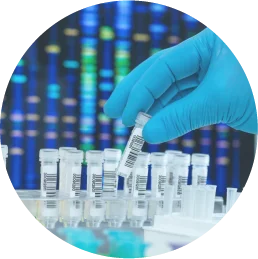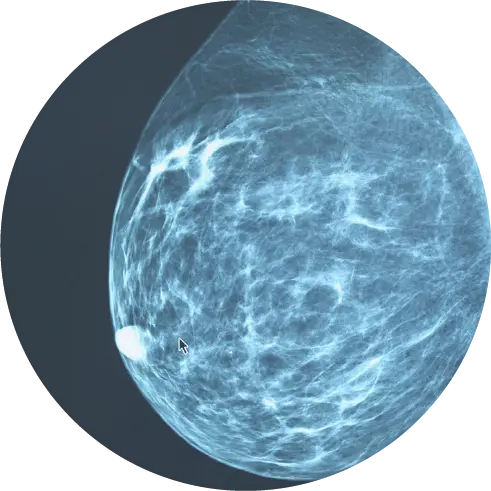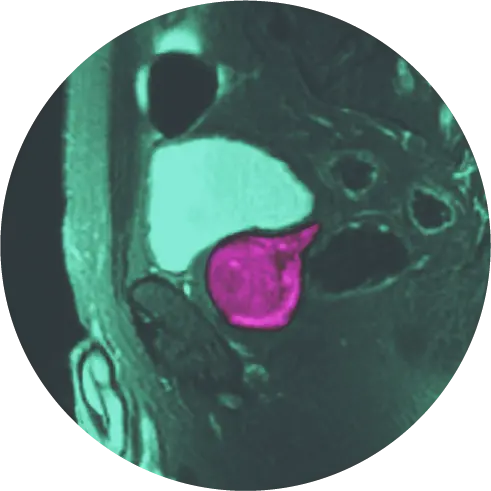Don’t let fiction trump facts when it comes to your prostate cancer or BPH treatment.
Like you, many patients have questions about laser focal therapy (also known as “LFT,” and focal laser ablation, or “FLA”). Over the years, we’ve often found ourselves clearing up misconceptions or myths. With SO much information out there, confusion is common. Researching prostate cancer treatments is an intensive process. (Have you ever seen so many abbreviations?!) So, in the spirit of making things just a little easier, we’ve compiled a list of LFT myths and the scientific facts to bust them.
Learn more about HALO’s prostate laser surgery.
Myth: Laser Focal Therapy is too new
Busted. In fact, the first reported focal laser ablation of prostate cancer was in 1993; almost 30 years ago. The team who performed the procedure reported a successful ablation (destruction using heat) of the diseased tissue with no complications. This was even before magnetic resonance imaging (MRI) guidance was introduced to LFT protocol. The team concluded in their peer-reviewed study that the procedure did indeed appear to be a safe and effective way of treating prostate cancer. I
Building on their success, doctors and clinicians around the world spent the following decades evolving the procedure, and eventually incorporated real-time multiparametric MRI (mpMRI). In 2007, the FDA cleared the Visualase® Thermal Therapy System (Bio Tex, Inc., Houston, TX) for the intended use of ablating soft tissue in urology. II Then, in 2009, HALO Diagnostics’ own Chief Research Officer, Bernadette M. Greenwood, MSc, conceptualized the use of transrectal focal therapy to eliminate MRI-visible, biopsy-confirmed tumors in the prostate gland. After years of testing and development, in May 2010, our team, led by Ms. Greenwood and Dr. Stuart T. May, MD performed the first successful transrectal MRI-guided focal therapy procedure on a patient. We knew then it was a game-changer.
That same year, we began a clinical trial. Results from the trial, now in Phase II, demonstrate a low risk of side effects, especially when compared with the standard of care procedure, a radical prostatectomy. The trial, involving 200 men, demonstrates a less than 1% risk for ED (erectile dysfunction), less than 1% for incontinence, and a 100% prostate cancer-specific survival rate since 2010. III Long available outside of the clinical trial, HALO Diagnostics centers have treated more than 800 cases of prostate cancer and benign prostatic hyperplasia (BPH) using LFT.
Myth: Laser Focal Therapy is only used to treat prostate cancer
Busted. LFT is used to treat both prostate cancer and BPH. BPH, also known as enlarged prostate, is a benign condition that causes excess prostate tissue to compress the urethra, often causing urinary issues. We treat both conditions using the same laser system and transrectal approach. Both procedures are MRI-guided and performed while the patient is inside the MRI machine. BPH treatment can be performed on its own, or simultaneously with the treatment of prostate cancer. The MR imaging allows us to see the exact location of prostate tumors and, in the case of BPH, excess prostate tissue surrounding the urethra. With eyes on the target, we then use a thin laser fiber to heat the tissue until it is destroyed or ablated. Our Visulase® laser system allows us to control the laser energy, as well as protect the urethra inside the prostate, and the delicate structures around the gland, including the neurovascular bundles responsible for erection.
What is BPH (benign prostatic hyperplasia)? How is it treated with laser focal therapy? Click here.
Myth: Laser Focal Therapy can only treat one tumor
Busted. LFT can treat more than one tumor during a single procedure. We plan laser procedures by first targeting the largest, highest Gleason score tumor, also known as the index lesion. After ablating the index lesion, we treat subsequent targets until all the areas are completely ablated. Depending on the proximity and size of the targets, we even can ablate multiple targets at the same time.
Learn more about what a Gleason score is here.
It is also a myth that LFT can only treat small areas, low Gleason scores, or minimal amounts of tissue. HALO has treated prostate glands up to 187cc in size, as well as Gleason scores as high as 5+5. Compare that to another treatment that uses heat to destroy tissue, like high-intensity ultrasound ablation, or HIFU. HIFU can only be used to treat gland volumes up to 40cc. LFT can be used to treat prostate glands as big as 300cc in size. That said, every patient’s case of prostate cancer is unique. At HALO, an entire team including myself, Ms. Greenwood, and several interventional radiologists, urologists, and clinicians carefully review each and every potential patient’s case. We then tailor treatment approaches according to each individual patient’s needs. Needless to say, we are very serious about practicing personalized, precision medicine.
Myth: Laser Focal Therapy can only be performed once
Busted. LFT can be performed more than once if needed. If a patient experiences a recurrence of localized prostate cancer, meaning that is confined within the prostate gland, they may elect to undergo another ablation depending on the nature of the recurrence. Unlike surgery, LFT leaves the prostate gland intact. This allows a patient to choose a second or third treatment as needed to control cancer while still minimizing side effects.
Myth: Laser Focal Therapy requires hospitalization
Busted. LFT is an outpatient procedure performed in an outpatient setting. It does not require an overnight stay in the hospital. The treatment is done in one session that takes anywhere from one to four hours depending on the patient’s particular case. Laser therapy is done using a transrectal approach and therefore does not require incisions. It also does not require general anesthesia, but conscious sedation, which is administered through an IV. Most of our patients report dozing off during the procedure.
The time it takes to recover from LFT varies by individual, but most men can return to work within a couple of days.
If you have been diagnosed with prostate cancer, take the time to fully explore your options. Every man’s case of prostate cancer is unique. At HALO Diagnostics, we firmly believe that there are no one-size-fits-all treatment options. Here, we offer laser focal therapy, MRI-guided prostate biopsies, and transurethral ultrasound ablation, or TULSA-PRO®. We also believe that early detection is critical when it comes to beating prostate cancer. For more on assessing your personal risk, as well as when you should begin PSA testing, read our prostate cancer risk post.
To learn more about the HALO diagnostic and treatment program, don’t wait! Give us a call today to speak to a member of our staff: (760) 322-8883. If you would prefer a member of our staff to contact you, simply fill out the form below and we will be in touch as soon as possible. We’re here to help you through this process every step of the way.
Article references:
[I] Amin Z, Lees WR, Bown SG. Technical note: interstitial laser photocoagulation for the treatment of prostatic cancer. Br J Radiol. 1993;66:1044–1047. [PubMed]
[II] Prepared by Division of General, Restorative, and Neurological Devices, Office of Device Evaluation Center for Devices and Radiological Health, 510(k): Regulatory Requirements for Medical Devices. Houston, Tx.: Washington, D.C.:U.S. Dept. of Health and Human Services, Public Health Service, Food and Drug Administration, Center for Devices and Radiological Health; For sale by the Supt. of Docs., U.S. G.P.O., 2008.
[III] Feller JF, Greenwood BM, Stafford RJ. Imaging and focal therapy of early prostate cancer. Cham: Springer; 2017. Transrectal laser focal therapy of prostate cancer; pp. 325–342.




